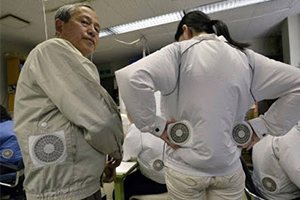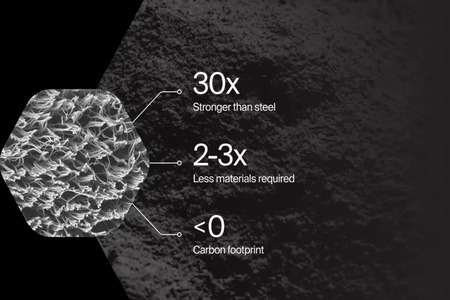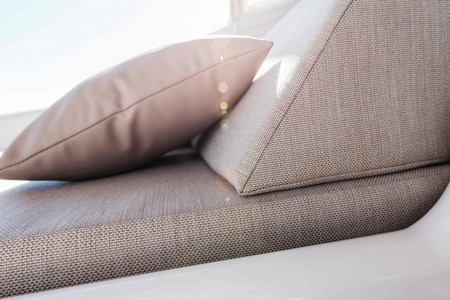
Can self-cooling clothes help in surviving the heatwave in future
YarnsandFibers News Bureau 2019-07-30 12:00:00 –I recently spent two years living in Chicago. As a British person adapting to life in America, I faced various struggles: terrible public transport, the complex rules of baseball, the virtual non-existence of meringues. But none were as all-consuming as the daily struggle to remain at a comfortable temperature. My days were spent either piling on jumpers and thermals, or reluctantly dressing in the lightest materials I could find. Chicago in the winter is so cold that any day above zero degrees is considered balmy. The surface of Lake Michigan freezes over, and sprays its sharp crystals at the nearby trees, transforming them into otherworldly bubbles of ice.
At last, the season changes. You gratefully breathe in gulps of spring before June arrives with its searing heat. Chicago is hardly alone in facing these extremes. The US is a land of glaciers and deserts, and of wild swings between summer heat and winter freeze. So perhaps it’s no surprise that Americans dedicate such a large amount of energy to heating and cooling their buildings; 40 per cent of the energy consumed in an average home is used to maintain comfortable temperatures for its residents, and it makes up around 13 per cent of the country’s total energy use.
In 2010, residential space heating in the US was responsible for 324million tonnes of carbon dioxide. But heating or cooling an entire building is a wasteful task: not only are you ensuring the comfort of its human inhabitants, but also its tables, sofas, and bookshelves – objects that don’t even care that it’s so cold you haven’t even left the house for three days.
Faced with this inefficiency, scientists and entrepreneurs across the US are trying to find ways to approach heating and cooling so that it focuses on the human body itself. One obvious way to do this is through textiles. We (almost) all wear clothes. From thick sweaters and long-johns in the winter to shorts and t-shirts in the summer, our choice of apparel is central to keeping us comfortable. But this only works to a point, says Gihan Amarasiriwardena, founder of the clothing company Ministry of Supply.
“It’s the dramatic switches between environments that cause the greatest discomfort,” he explains. “People get up at 6AM, they have a shower, and they’d be feeling fresh. But then they’d hop on the subway and it’s 85 degrees and 100 per cent humidity in there, and they get to the office and they’re completely drenched. I kept hearing that story, people saying, ‘I get to the office and I’m freezing.’”
Amarasiriwardena, a former MIT engineer, decided to design a business shirt that could deal with these pressures by changing itself. In doing so, he realised that city commuters weren’t the first people to deal with dramatic changes in temperature during their everyday lives: it was also a problem for astronauts. The lack of atmosphere in space leads to extreme swings – the sunlit side of the moon is hotter than the Sahara, while the dark side can drop to around -170C – and space suits, in particular gloves, need to be able to deal with such fluctuations.
In the 1980s, Nasa began experimenting with phase-change materials in its clothing. This technology means a textile can absorb and hold heat at high temperatures, creating a cooling effect, and release it at low temperatures, warming the wearer of the garment. The same technology – which Amarasiriwardena likens to paraffin wax surrounded by a plastic straw – is also useful on earth. At his company, these yarns are woven into a fabric that looks and feels like the material used in a classic dress shirt, but can adapt to its wearer’s body temperature throughout the day.
Amarasiriwardena is not alone in confronting this problem, yet he’s managed to successfully commercialise his textile. The US government has given money to various research programmes inventing new ways to create cooler humans rather than cooler houses. While most of these efforts remain in laboratories a range of innovative textiles could, in the future, change how we keep ourselves comfortable, whatever the weather.
Shanhui Fan is a professor at Stanford who is developing one of these alternative approaches. His laboratory has created a textile that allows infrared radiation to pass through the material, using nanostructures, creating a dramatically cooler garment. “When we’re sitting in a room, more than half of the heat dissipation of your body into the room comes from radiation. So being able to influence this radiation is very important,” he explains. “The conventional textile, for example cotton, turns out to be a very good absorber of radiation, so, as far as getting heat out is concerned, this is not the best solution.”
He’s now working on taking this concept out of the laboratory and incorporating it in products that can be manufactured at a larger scale. Fan has already patented the technology; the main challenge now is to weave it into something that looks and feels like clothing people would want to wear. He’s currently working with a commercial textiles facility to develop a process that will allow these nanostructures to be manufactured, while also “preserving the characteristics we as humans demand textiles have”, he tells me.
The US government has pumped funds into other cooling technologies including an adaptive material by San Francisco based laboratory Otherlab, which changes its thickness according to the temperature. This creates an insulating layer of air when the temperature drops, trapping heat to keep its wearer warm. Another cloth, developed by engineers at the University of California - Irvine, imitates the properties of squid skin to capture and release body heat.
Currently, fashion is doing the environment more harm than good, leaving a slew of chemicals, pesticides and waste in its wake. And, in a world of instantaneous fashion and £1 bikinis, a new generation of smart new materials are not going to materialise overnight – certainly not to the extent that offices will be prepared to turn down the thermostats.
Yet such smart materials could be the basis of apparel that helps rather than hinders our efforts to tackle climate change. The planet is heating up, and if early adopters find they can turn down the AC a notch or two in their own homes, then these lab experiments will have saved a little extra energy – and made us more comfortable in the process.
Courtesy: New Statesman
Market Intelligence
Ask for free sample Report

experience
Customer Base
dedicated team
Countries Served Worldwide









